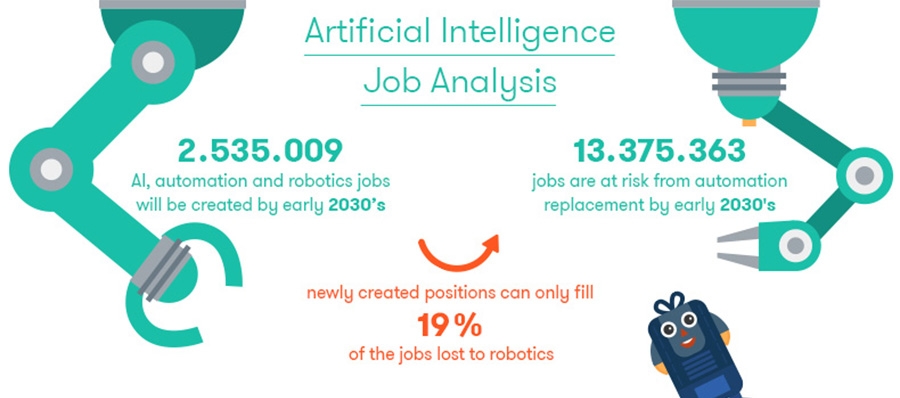Introduction
Artificial intelligence (AI) is revolutionizing the world of work, with companies across industries using it to automate tasks and make their operations more efficient. While AI has the potential to bring numerous benefits to businesses and individuals, there are concerns about its impact on the job market and employment trends. In this article, we will explore the ways in which AI is affecting the job market and discuss the implications for job seekers, employees, and employers.
What is Artificial Intelligence?
Before diving into the impact of AI on the job market, it is essential to understand what AI is and how it works. AI refers to the ability of machines to learn and perform tasks that traditionally require human intelligence, such as recognizing patterns, making decisions, and solving problems. AI is powered by complex algorithms and machine learning models that enable it to improve its performance over time.
How AI is Affecting the Job Market
Automation and Job Displacement
One of the most significant ways in which AI is affecting the job market is through automation. AI-powered robots and machines can perform many tasks that were previously done by humans, leading to job displacement in certain industries. According to a report by the World Economic Forum, AI is expected to displace around 75 million jobs by 2022.
Emerging Job Roles
While AI may lead to the displacement of some jobs, it is also creating new job roles that require specialized skills in areas such as data analysis, machine learning, and AI development. These emerging job roles present opportunities for individuals with the right skills and expertise.
Need for Reskilling and Upskilling
As AI continues to transform the job market, there is a growing need for individuals to reskill and upskill in order to remain competitive in the workforce. This involves acquiring new skills and knowledge that are relevant to emerging job roles and industries.
The Ethical and Social Implications of AI-Driven Automation
While AI-driven automation can bring many benefits, it also raises ethical and social concerns that need to be addressed. One of the main concerns is the impact of automation on income inequality, as it may lead to a widening gap between high-skilled and low-skilled workers. Another concern is the potential for bias in AI algorithms, which could result in discrimination against certain groups of people.
How Businesses and Governments Can Address the Challenges
To ensure a smooth transition to the future of work, businesses and governments need to take steps to address the challenges posed by AI. This includes investing in reskilling and upskilling programs, promoting lifelong learning, and ensuring that AI algorithms are fair and unbiased.
Conclusion
AI is transforming the world of work, and its impact on the job market and employment trends is significant. While there are concerns about job displacement and income inequality, there are also opportunities for individuals to reskill and upskill in emerging job roles. By addressing the ethical and social implications of AI-driven automation, businesses and governments can ensure that the benefits of AI are shared equitably across society.
FAQs
What is AI? AI refers to the ability of machines to learn and perform tasks that traditionally require human intelligence.
How is AI affecting the job market? AI is affecting the job market through automation, which may lead to job displacement in certain industries. It is also creating new job roles that require specialized skills in areas such as data analysis, machine learning, and AI development.
What are the ethical and social implications of AI-driven automation? The ethical and social implications of AI-driven automation include the potential for bias in AI algorithms and the impact of automation on income inequality.
What can businesses and governments do to address the challenges posed by AI? Businesses and governments can address the challenges posed by

